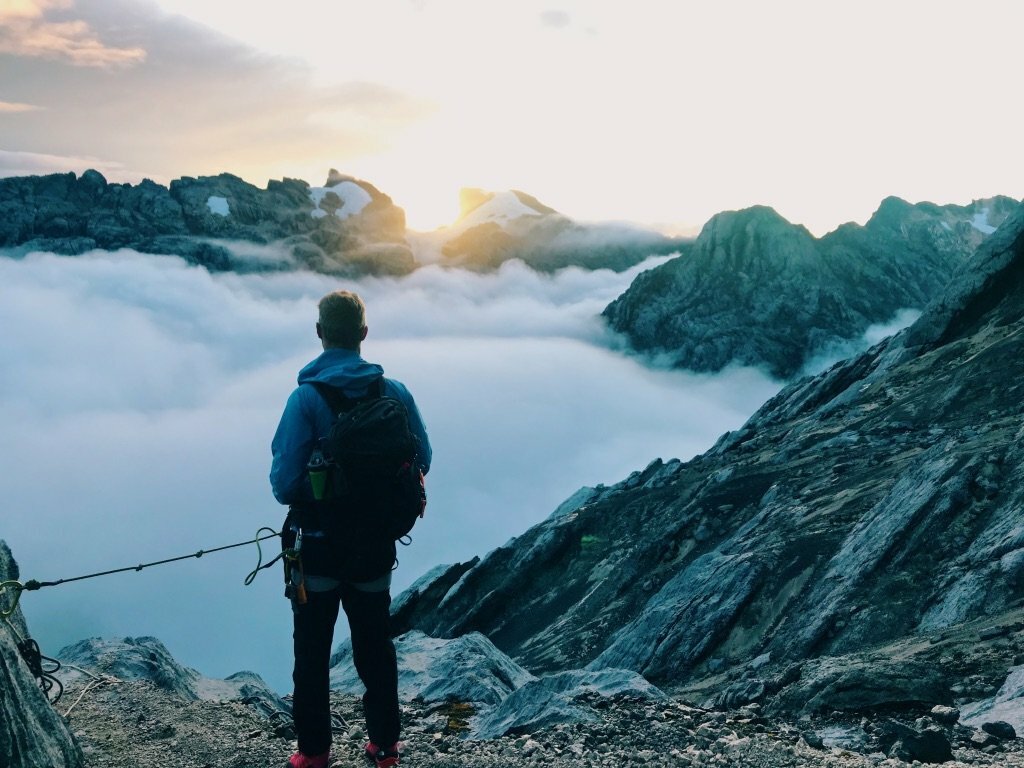Would you have raised an eyebrow if someone in the 1600s told you they had sighted snowy peaks in the tropics? Glaciers are one of the things that make this week's featured mountain peak, Puncak Jaya, stand out.
Sounds like: puntʃak ˈdʒaja / “pun chaak jai uh
Indonesia's Puncak Jaya is the tallest point in Oceania and one of the few tropical mountains in the world with glaciers. The Indonesian name of Puncak Jaya translates to "Glorious Peak", however, it’s also known by its European name, Carstensz Pyramid, after the first European person to sight the mountain, Jan Carstensz. He first saw it on a rare, clear day during his sailing journey in 1623. Upon returning home, no one believed his claims that Puncak Jaya was topped with glaciers and snow. It wasn’t until 200 years later that the evidence was verified. Sadly, but not surprisingly, the glaciers have shrunk in recent years due to climate change, and some of them have disappeared altogether.
Situated on the island of New Guinea, it has an elevation of 16,024 ft (4,884 m) and is the highest island peak on Earth. Puncak Jaya forms part of the famous Seven Summits challenge in mountaineering. This is a feat in which mountaineers climb the tallest mountain on every continent. Puncak Jaya is considered one of the most difficult climbs of the Seven Summits despite having the lowest elevation. This is due to the remote location, expense, and technical skills required to navigate the challenging terrain.
Since Puncak Jaya is geophysically in Oceania, many people consider it the highest peak on the continent. However, some climbers have other political opinions. Therefore, debates often arise about which mountain to climb for the Seven Summits challenge. Some climbers opt for Mount Kosciuszko in Australia, at 7310 ft (2,228 m), instead.
The first known ascent was in 1936 by a group of Dutch Expeditioners, who were unable to tell which summit was the highest. In 1962 the highest known summit was reached by Heinrich Harrer (portrayed in the movie Seven Years in Tibet) and three others.
 Image by Johnny Ward via OneStep4Ward
Image by Johnny Ward via OneStep4Ward
Fun facts:
- A government permit is required to access the peak. The mountain was closed to climbers from 1995-2005 due to various high-risk factors in the area.
- An extremely strenuous and dangerous week-long hike through the jungle was previously required to reach the Base Camp. Nowadays, a helicopter ride provides a more direct, comfortable experience to camp.
- The mountain has 7 faces and numerous routes to the summit. The most common route is known as the Harrer or Normal Route and requires 12-15 hours for a roundtrip to the summit and back down. The other two routes are the East Ridge, a long scrambling route; and the American Direct, which is a long steep climb directly up the North Face.
- The best time to summit it is from April to November.
- Daytime temperatures can vary from 53ºF (12ºC) to 98ºF (37ºC) and can drop as low as 18ºF (-8ºC) at night.
- One of the largest copper and gold mines in the world is located next to Puncak Jaya.
Are you one of the few people to have summitted Puncak Jaya? Is it on your bucket list? Let us know in the comment section.
Make sure you dive into the rest of our 'To The Peaks & Beyond' Series here.
See you at the next peak, keep climbing!

